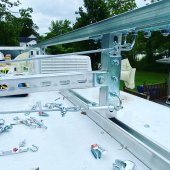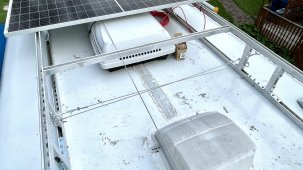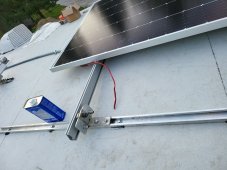Off Gridin' It
New Member
- Joined
- Dec 11, 2020
- Messages
- 102
Just wanted to post some pics of my latest build. A 2004 Holiday Rambler Neptune Class A
Here are the details.
4000 watt solar array
Custom aluminum solar racking with steel coated safety tension cables.
(2) EG4 - 100ah 48 volt rack mounted batteries. 10240 wh capacity
Growatt SPF 5000 US
Solar Edge auto transformer
240 volt split phase AC output
(2) Victron 48/12 volt step down converters for a total of 60 amps available for slides and leveling jacks.
Sterling 12/48 volt DC to DC charger
Victron BMV-712 Battery Monitor
This will run everything in the RV including both AC units at the same time.
It was built to be able to easily expand the battery bank with 2 more EG4 batteries.
I also included some screenshots from the VictronConnect app.
During the array build I also cleaned and repaired any old roof damage that looked like may later be compromised.
This was a fun and tough build!
Here are the details.
4000 watt solar array
Custom aluminum solar racking with steel coated safety tension cables.
(2) EG4 - 100ah 48 volt rack mounted batteries. 10240 wh capacity
Growatt SPF 5000 US
Solar Edge auto transformer
240 volt split phase AC output
(2) Victron 48/12 volt step down converters for a total of 60 amps available for slides and leveling jacks.
Sterling 12/48 volt DC to DC charger
Victron BMV-712 Battery Monitor
This will run everything in the RV including both AC units at the same time.
It was built to be able to easily expand the battery bank with 2 more EG4 batteries.
I also included some screenshots from the VictronConnect app.
During the array build I also cleaned and repaired any old roof damage that looked like may later be compromised.
This was a fun and tough build!
Attachments
-
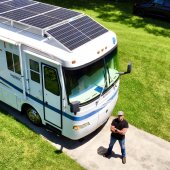 4000 Watt Class A_No Watermark_01.jpg674.6 KB · Views: 70
4000 Watt Class A_No Watermark_01.jpg674.6 KB · Views: 70 -
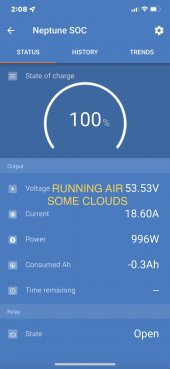 4000 Watt Class A_No Watermark_07.jpg65.2 KB · Views: 64
4000 Watt Class A_No Watermark_07.jpg65.2 KB · Views: 64 -
 4000 Watt Class A_No Watermark_06.jpg63.9 KB · Views: 59
4000 Watt Class A_No Watermark_06.jpg63.9 KB · Views: 59 -
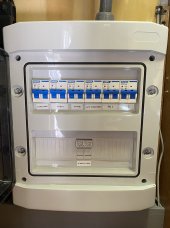 4000 Watt Class A_No Watermark_05.JPG124.8 KB · Views: 65
4000 Watt Class A_No Watermark_05.JPG124.8 KB · Views: 65 -
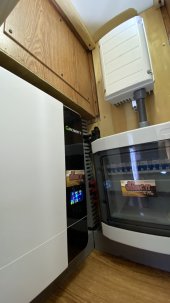 4000 Watt Class A_No Watermark_04.JPG80.5 KB · Views: 65
4000 Watt Class A_No Watermark_04.JPG80.5 KB · Views: 65 -
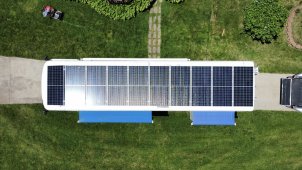 4000 Watt Class A_No Watermark_02.jpg622.5 KB · Views: 72
4000 Watt Class A_No Watermark_02.jpg622.5 KB · Views: 72 -
 4000 Watt Class A_No Watermark_000001.JPG572 KB · Views: 72
4000 Watt Class A_No Watermark_000001.JPG572 KB · Views: 72 -
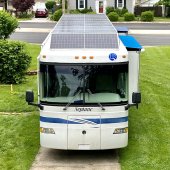 4000 Watt Class A_No Watermark_00001.jpg474.7 KB · Views: 70
4000 Watt Class A_No Watermark_00001.jpg474.7 KB · Views: 70 -
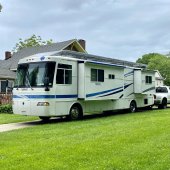 4000 Watt Class A_No Watermark_0001.jpg529.9 KB · Views: 65
4000 Watt Class A_No Watermark_0001.jpg529.9 KB · Views: 65 -
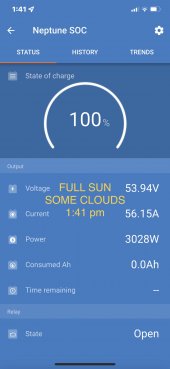 4000 Watt Class A_No Watermark_08.jpg65.7 KB · Views: 69
4000 Watt Class A_No Watermark_08.jpg65.7 KB · Views: 69




